 |
 |
 |
| |
Lean Mass Inches Out Fat Mass as Predictor of Low Bone Density With HIV, HIV UPBEAT Cohort
|
| |
| |
14th European AIDS Conference. October 16-19, 2013. Brussels
Mark Mascolini
Greater lean body mass and greater fat mass both correlated with higher bone mineral density (BMD) in a DXA study of 474 people with and without HIV in Ireland [1]. But lean mass had a bigger impact on BMD than fat mass. In all these analyses, HIV infection was independently linked to lower BMD.
Research ties low weight to low BMD in people with HIV [2,3], but whether fat mass or lean body mass has a bigger impact on BMD remains uncertain. To address that question, researchers working with the prospective HIV UPBEAT cohort in Ireland conducted this analysis of fat mass and lean body mass in these people with and without HIV infection.
Cohort members had DXA scans of the total body, lumbar spine, and hip to assess fat and lean body mass and BMD at the femoral neck, total hip, and lumbar spine. The researchers used BMD/height as a skeletal size-adjusted BMD endpoint.
Of the 474 cohort members recruited between February 2011 and July 2012, 210 had HIV infection and 264 did not. The HIV and non-HIV groups differed significantly in median age (39 versus 42, P = 0.03), proportion of men (58.6% versus 43.6%, P = 0.001), proportion of Caucasians (60.5% versus 75.4%, P = 0.001), and proportion of Africans (39.5% versus 24.6%, P = 0.001).
Median body mass index was marginally lower in the HIV group (26 versus 27 kg/m(2), P = 0.05), as was total fat mass (23.0 versus 24.8 kg, P = 0.07). Leg fat mass was significantly lower in people with HIV (7.3 versus 8.1 kg, P = 0.04). Median total lean mass did not differ significantly between the HIV and no-HIV groups (50.3 versus 47.5 kg, P = 0.98); nor did trunk lean mass or leg lean mass. Percent lean mass was marginally higher with than without HIV (68.9% versus 66.3%, P = 0.05), while percent fat mass was marginally lower (31.2% versus 33.7%, P = 0.09).
Higher body mass index correlated with higher BMD at the femoral neck, total hip, and lumbar spine (P < 0.0001 for all correlations). The correlations were all stronger in the HIV-positive group than in the HIV-negative group: r = 0.40 with HIV and 0.27 without HIV at the femoral neck; r = 0.43 with HIV and 0.39 without HIV at the total hip; r = 0.31 with HIV and 0.27 without HIV at the lumbar spine.
Greater lean mass correlated with higher BMD at all three sites (P < 0.0001 for all correlations). But for lean mass the correlations were weaker with HIV than without HIV: r = 0.24 with HIV and 0.30 without HIV at the femoral neck; r = 0.28 with HIV and 0.41 without HIV at the total hip; r = 0.13 with HIV and 0.25 without HIV at the lumbar spine.
Greater fat mass correlated with higher BMD at all three sites (P < 0.0001 for all correlations), and in this case the correlation was stronger with HIV at every site: r = 0.23 with HIV and 0.20 without HIV at the femoral neck; r = 0.24 with HIV and 0.22 without HIV at the total hip; r = 0.26 with HIV and 0.21 without HIV at the lumbar spine.
A multivariable linear regression model adjusted for age, gender, ethnicity, lean mass, and fat mass determined that HIV infection was independently associated with lower BMD at each site: -0.048 g/cm(2), P = 0.0002, at the femoral neck; -0.063 g/cm(2), P < 0.0001, at the total hip; and -0.053, P = 0.001, at the lumbar spine.
An analysis adjusted for age, gender, ethnicity, and HIV status determined that greater lean mass and greater fat mass were each independently associated with higher BMD at all three sites. The effect was consistently greater with each kg higher lean mass than with each kg higher fat mass: 0.008 g/cm(2) with HIV (P < 0.0001) versus 0.001 g/cm(2) `without HIV (P = 0.03) at the femoral neck; 0.008 g/cm(2) with HIV (P < 0.0001) versus 0.001 g/cm(2) without HIV (P = 0.01) at the total hip; 0.008 g/cm(2) with HIV (P < 0.0001) versus 0.002 g/cm(2) without HIV (P = 0.01) at the lumbar spine
When the investigators further adjusted the model for skeletal size, HIV infection remained independently associated with lower BMD. In this model, greater lean mass and greater fat mass remained independently associated with higher BMD at the femoral neck and total hip, although the effect size advantage with lean mass waned. Greater fat mass but not greater lean mass was independently associated with higher BMD at the lumbar spine. The researchers suggested that the reduced effect of lean mass in the skeletal size-adjusted models confirms that larger skeletons require greater muscle mass.
The HIV UPBEAT team stressed that in all models, including the skeletal size-adjusted models, HIV was consistently associated with lower BMD at all three sites.
References
1. Cotter A, Sabin CA, Simelane S, Macken A, Kavanagh E, Mallon PWG, HIV UPBEAT. Lean mass has a greater effect on bone mineral density than fat mass: data from a cohort of HIV-positive and HIV-negative subjects. 14th European AIDS Conference. October 16-19, 2013. Brussels. Abstract PE11/29.
2. Bolland MJ, Grey AB, Gamble GD, Reid IR. Low body weight mediates the relationship between HIV infection and low bone mineral density: a meta-analysis. J Clin Endocrinol Metab. 2007;92:4522-4528.
3. Grijsen ML, Vrouenraets SM, Wit FW, et al. Low bone mineral density, regardless of HIV status, in men who have sex with men. J Infect Dis. 2013;207:386-391.
-------------------------------------
Lean mass has a greater effect on bone mineral density
than fat mass; data from a cohort of HIV-positive and HIV-negative subjects
Reported by Jules Levin
EACS 2013 Oct 16-19 Brussels, Belgium
AG Cotter,1,2 CA Sabin,3 PWG Mallon1,2 on behalf of the HIV UPBEAT Study Group
1HIV Molecular Research Group, School of Medicine and Medical Science, University College Dublin, Dublin, Ireland,
2Mater Misericordiae University Hospital, Dublin, Ireland
3Research Department of Infection and Population Health, University College London, London, United Kingdom
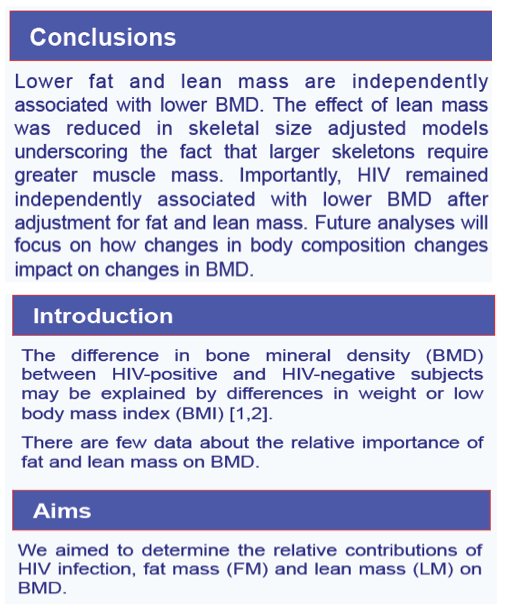
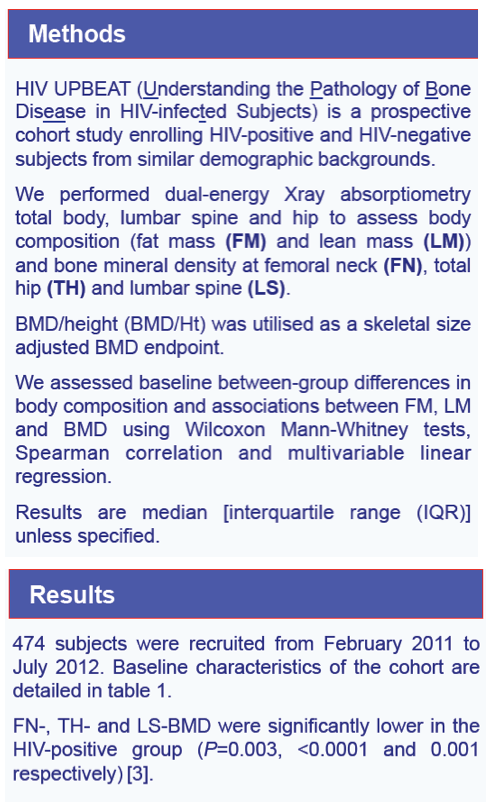
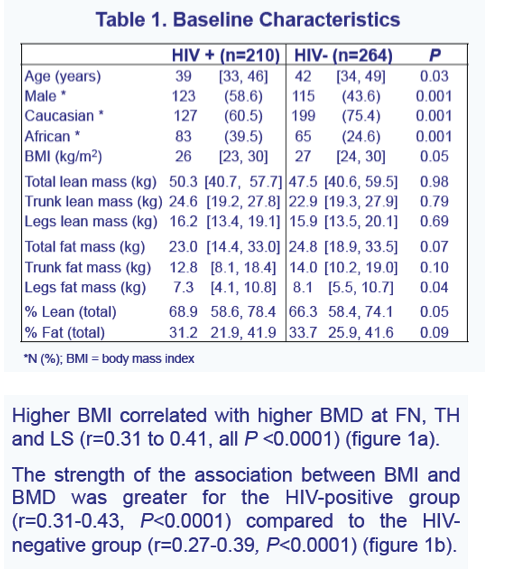
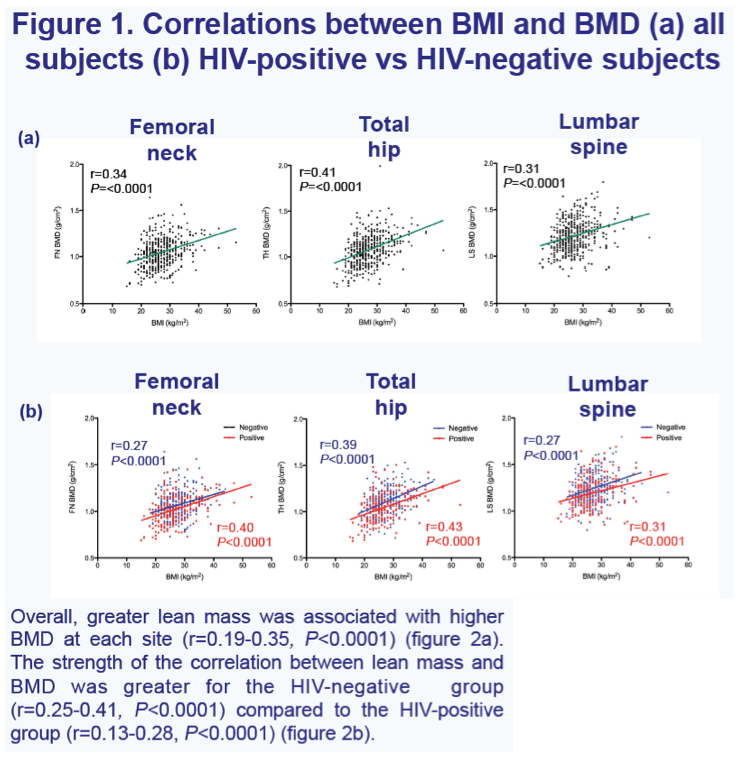
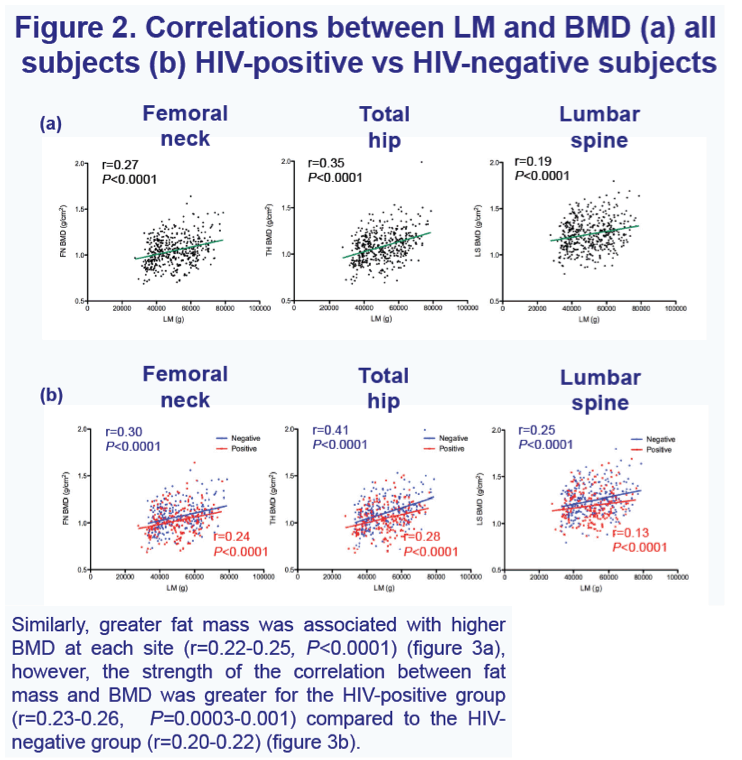
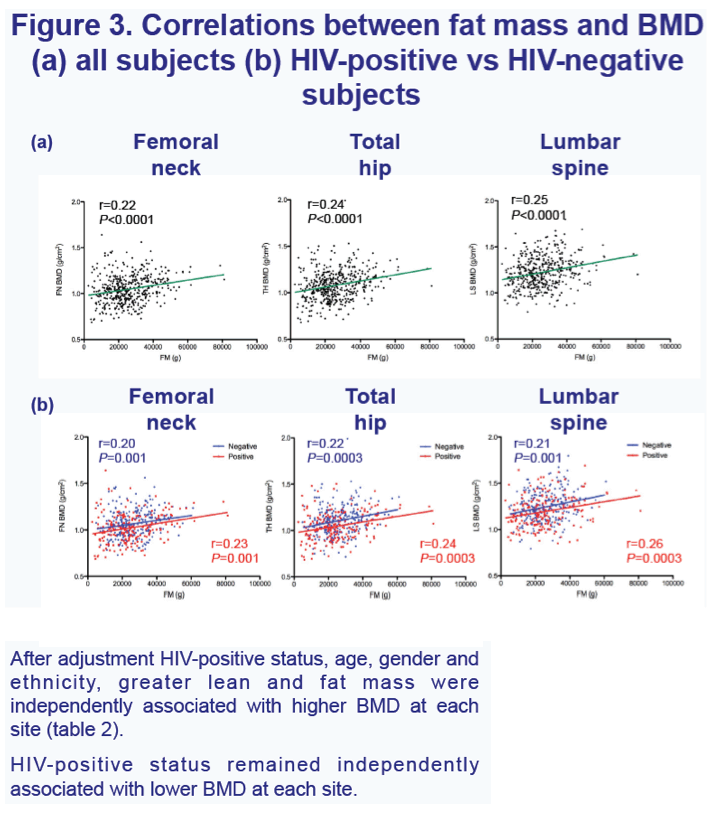
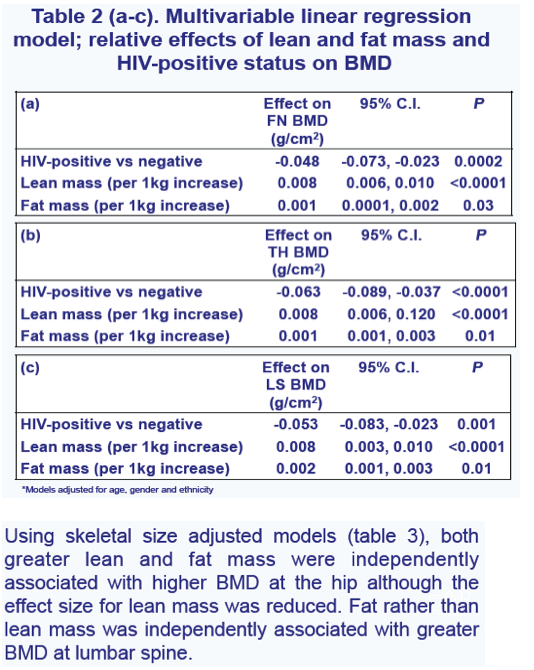
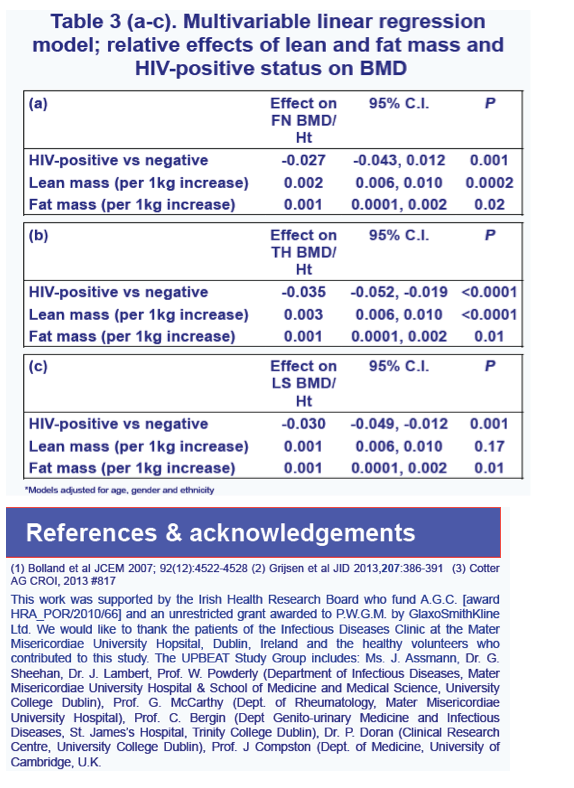
|
| |
|
 |
 |
|
|